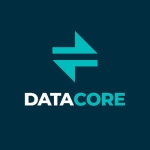We worked with Red Hat Ceph Storage, but mainly we recommended it to special customers with special use cases. For example, when customers purchase the Red Hat OpenShift platform, one of the licensing models is to work with Red Hat Ceph Storage as a storage for the container platform, so this is when we also worked with the solution for our customers. The main use case for Red Hat Ceph Storage was as a container platform for Red Hat OpenShift.
What I found most valuable from Red Hat Ceph Storage is integration because if you are talking about a solution that consists purely of Red Hat products, this is where integration benefits come in. In particular, Red Hat Ceph Storage becomes a single solution for managing the entire environment in terms of the container or the infrastructure, or the worker nodes because it all comes from a single plug.
What could be improved in Red Hat Ceph Storage is its user interface or GUI.
Red Hat Ceph Storage is a stable product. We've deployed it twice and we didn't have problems from it.
Red Hat Ceph Storage is a scalable product.
I've never contacted technical support for Red Hat Ceph Storage.
The initial setup, including customization and optimization for performance, for Red Hat Ceph Storage, was not easy at the beginning, particularly when you need to dig a little bit deeper into the product. Sometimes, you'll also need some assistance from the technical support team.
The licensing model for Red Hat Ceph Storage was for two hundred terabytes if I remember correctly.
My company is an implementer of Red Hat Ceph Storage. The solution was implemented for two or three customers in the FinTech field, but I don't recall using Red Hat Ceph Storage that often.
My advice to others who may want to start using the solution is that its value is good, especially if you have an entire Red Hat environment, as that is when you'll have the best integration.
My rating for Red Hat Ceph Storage is seven out of ten.




















